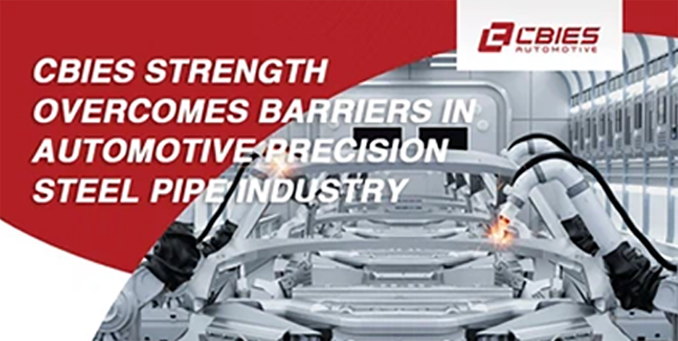Essential Components for Automotive HVAC Systems and Their Importance in Vehicle Comfort
Dec . 12, 2024 18:41
Understanding Automotive HVAC Parts Essential Components of Vehicle Comfort
When it comes to automotive systems, the focus often gravitates towards the engine, transmission, and brakes. However, one of the crucial aspects of a vehicle's functionality and comfort that is sometimes overlooked is the HVAC system, which stands for Heating, Ventilation, and Air Conditioning. The HVAC system is responsible for regulating the temperature within the vehicle, ensuring a comfortable driving experience regardless of the weather conditions outside. To fully appreciate the significance of automotive HVAC systems, it’s essential to understand their key components and how they work together.
Core Components of Automotive HVAC Systems
1. Compressor The heart of the HVAC system, the compressor is responsible for pressurizing the refrigerant and circulating it through the system. When the driver activates the air conditioning, the compressor engages and starts pumping the refrigerant, an essential step in transferring heat away from the cabin.
2. Condenser Once the refrigerant has been pressurized by the compressor, it flows to the condenser, where it dissipates heat and turns from a gas into a liquid. The condenser is typically located at the front of the vehicle, allowing air to flow through it while the car is in motion.
3. Expansion Valve After the refrigerant leaves the condenser as a high-pressure liquid, it travels to the expansion valve. This component regulates the flow of refrigerant into the evaporator, reducing its pressure and allowing it to vaporize, which absorbs heat inside the vehicle.
4. Evaporator This is where the magic happens. The evaporator is located inside the vehicle’s cabin and is where the refrigerant absorbs heat from the air, creating cool air that is then blown into the cabin. As the refrigerant evaporates, it transforms back into a gas, ready to return to the compressor and complete the cycle.
5. Blower Motor This component controls the airflow throughout the cabin. The blower motor pushes air through the evaporator (for cooling) or through the heater core (for heating), ensuring that the driver and passengers remain comfortable regardless of external temperature conditions.
automotive hvac parts
6. Heater Core A crucial part of the HVAC system for colder climates, the heater core uses hot coolant from the engine to warm the air being circulated into the cabin. This component works in tandem with the heater control valve, which regulates the flow of hot coolant based on the driver’s temperature setting.
7. Ductwork and Vents These components distribute air throughout the vehicle. Ducts carry the conditioned air from the evaporator and heater core to various vents located throughout the cabin. Properly designed ductwork ensures that air reaches every passenger, improving overall comfort.
The Importance of Proper Maintenance
Just like any other system in a vehicle, the HVAC system requires regular maintenance to function optimally. Neglecting this system can lead to various issues, including decreased performance, poor air quality, and even complete system failure. Regular checks, such as inspecting refrigerant levels, checking for leaks, and replacing air filters, can help mitigate these issues.
In recent years, advancements in automotive technology have led to the development of more efficient HVAC systems, including climate control features that provide personalized comfort settings for different zones in the vehicle. Understanding the components that make up automotive HVAC systems not only aids in troubleshooting problems but also highlights the importance of these systems in enhancing the overall driving experience.
Conclusion
In summary, automotive HVAC parts are integral to the comfort and functionality of modern vehicles. Each component, from the compressor to the ductwork, plays a crucial role in ensuring a pleasant environment inside the car. By understanding these parts and their functions, vehicle owners can better appreciate the engineering that goes into making every drive enjoyable, regardless of the weather. Regular maintenance and timely repairs can keep these systems running efficiently, ensuring that comfort is just a press of a button away.
 Afrikaans
Afrikaans  Albanian
Albanian  Amharic
Amharic  Arabic
Arabic  Armenian
Armenian  Azerbaijani
Azerbaijani  Basque
Basque  Belarusian
Belarusian  Bengali
Bengali  Bosnian
Bosnian  Bulgarian
Bulgarian  Catalan
Catalan  Cebuano
Cebuano  Corsican
Corsican  Croatian
Croatian  Czech
Czech  Danish
Danish  Dutch
Dutch  English
English  Esperanto
Esperanto  Estonian
Estonian  Finnish
Finnish  French
French  Frisian
Frisian  Galician
Galician  Georgian
Georgian  German
German  Greek
Greek  Gujarati
Gujarati  Haitian Creole
Haitian Creole  hausa
hausa  hawaiian
hawaiian  Hebrew
Hebrew  Hindi
Hindi  Miao
Miao  Hungarian
Hungarian  Icelandic
Icelandic  igbo
igbo  Indonesian
Indonesian  irish
irish  Italian
Italian  Japanese
Japanese  Javanese
Javanese  Kannada
Kannada  kazakh
kazakh  Khmer
Khmer  Rwandese
Rwandese  Korean
Korean  Kurdish
Kurdish  Kyrgyz
Kyrgyz  Lao
Lao  Latin
Latin  Latvian
Latvian  Lithuanian
Lithuanian  Luxembourgish
Luxembourgish  Macedonian
Macedonian  Malgashi
Malgashi  Malay
Malay  Malayalam
Malayalam  Maltese
Maltese  Maori
Maori  Marathi
Marathi  Mongolian
Mongolian  Myanmar
Myanmar  Nepali
Nepali  Norwegian
Norwegian  Norwegian
Norwegian  Occitan
Occitan  Pashto
Pashto  Persian
Persian  Polish
Polish  Portuguese
Portuguese  Punjabi
Punjabi  Romanian
Romanian  Samoan
Samoan  Scottish Gaelic
Scottish Gaelic  Serbian
Serbian  Sesotho
Sesotho  Shona
Shona  Sindhi
Sindhi  Sinhala
Sinhala  Slovak
Slovak  Slovenian
Slovenian  Somali
Somali  Spanish
Spanish  Sundanese
Sundanese  Swahili
Swahili  Swedish
Swedish  Tagalog
Tagalog  Tajik
Tajik  Tamil
Tamil  Tatar
Tatar  Telugu
Telugu  Thai
Thai  Turkish
Turkish  Turkmen
Turkmen  Ukrainian
Ukrainian  Urdu
Urdu  Uighur
Uighur  Uzbek
Uzbek  Vietnamese
Vietnamese  Welsh
Welsh  Bantu
Bantu  Yiddish
Yiddish  Yoruba
Yoruba  Zulu
Zulu 












